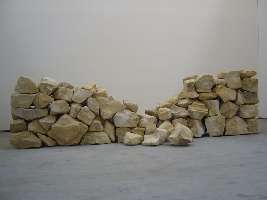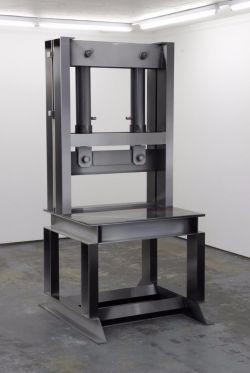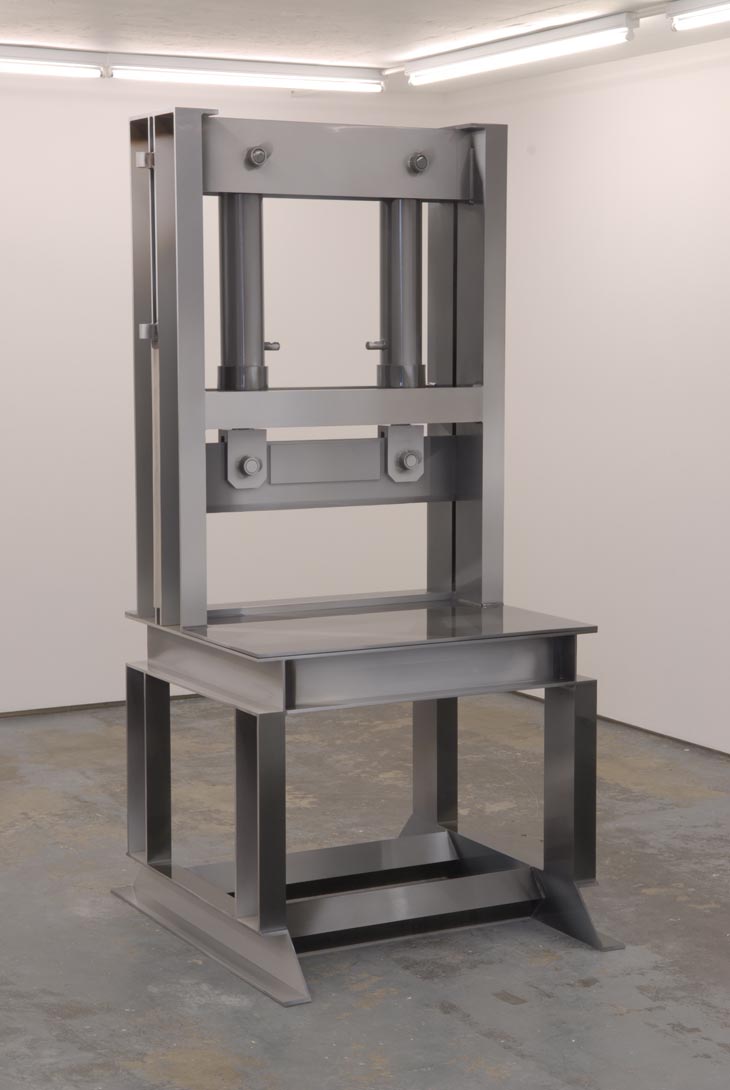
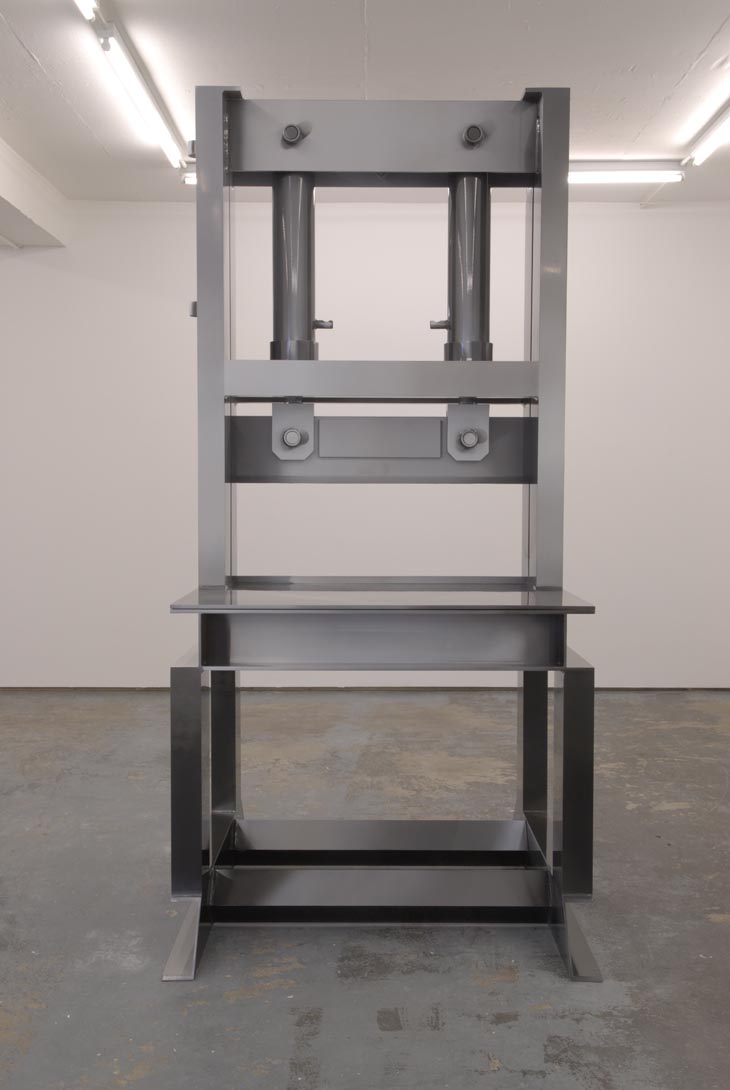
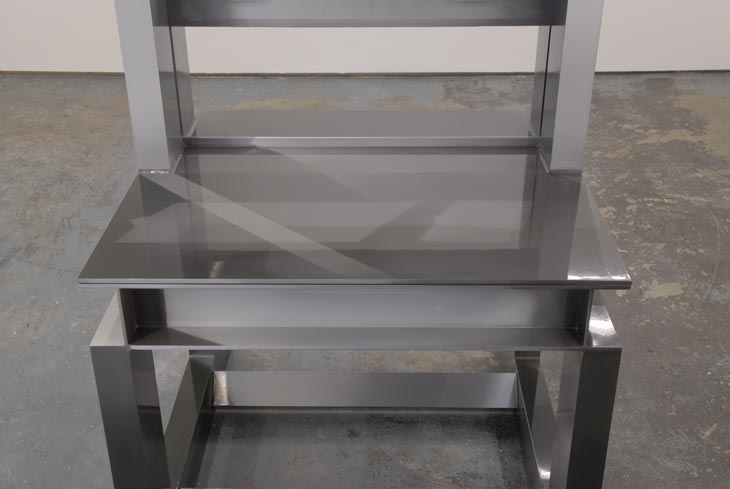

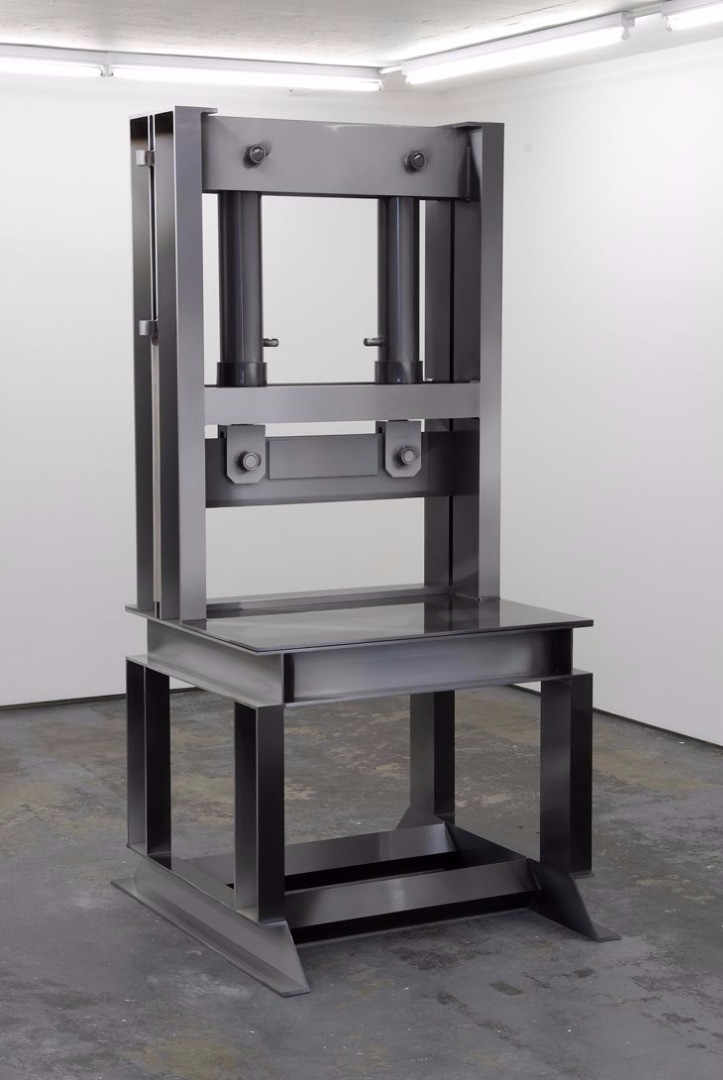
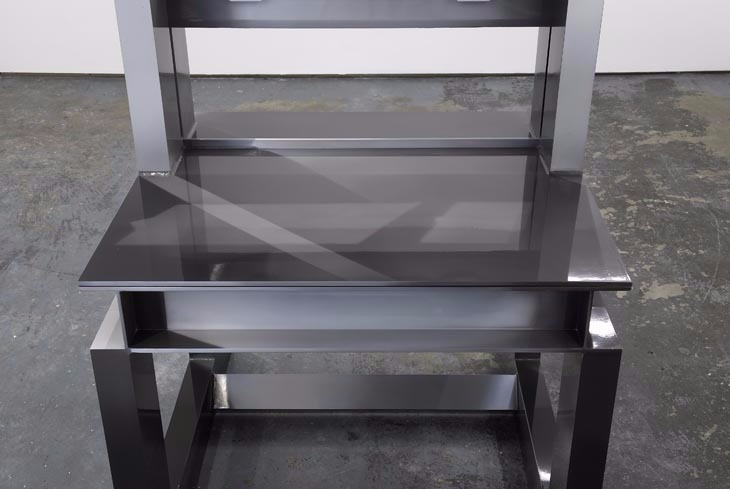
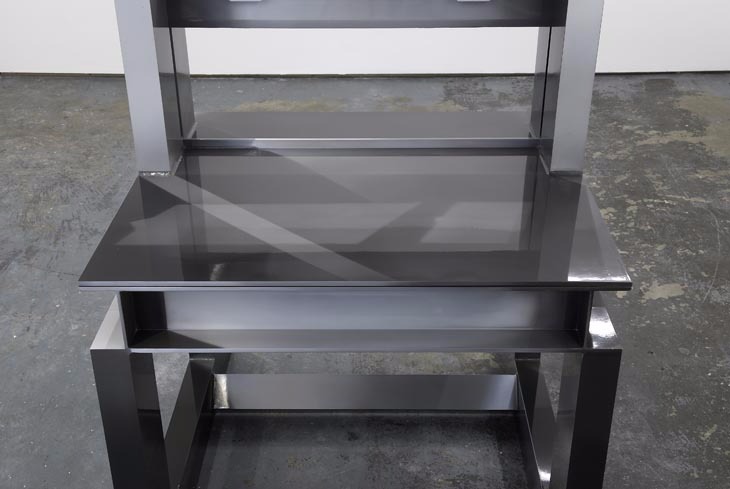

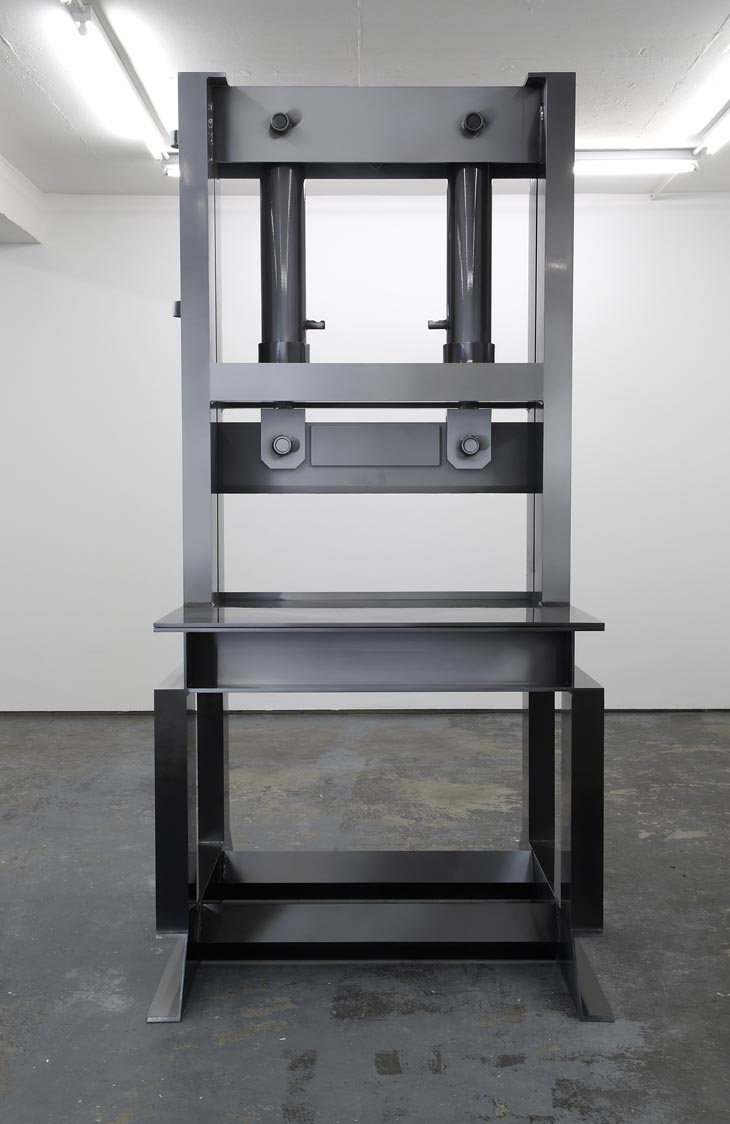
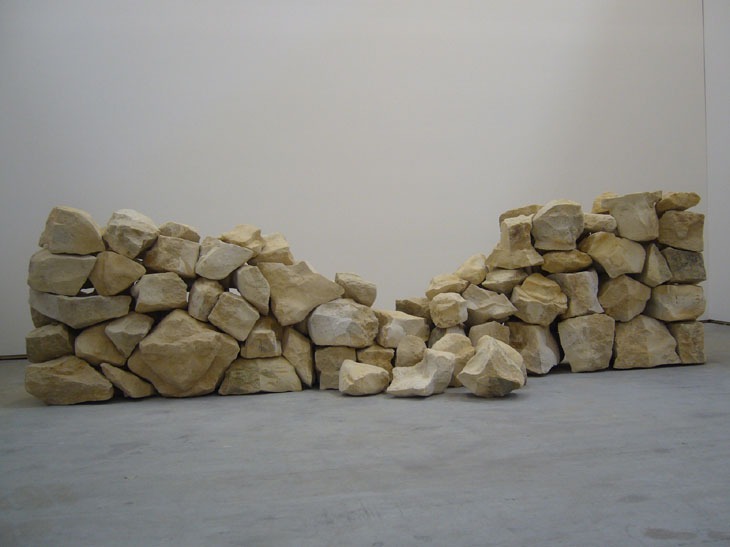
Rupert Norfolk
Guillotine is a replica of an industrial machine, transposed into spray-painted aluminium. Its airbrushed surface simulates and exaggerates the shades and reflections caused by its own structure under contrived lighting conditions. Not quite corresponding with the real highlights and shadows, this treatment has a contradictory and disquieting effect, at once compounding the physical presence of this overbearing apparatus and at the same time rendering it with a strangely indeterminate graphic quality.
Pixelweave is a colourfully checkered Aubusson tapestry made with traditional techniques and exhibited on the floor with its thick fabric arranged in undulations. It becomes apparent that while some of these folds are real, others are the illusory effects of shifts in tone and distortions in pattern, which have been integrated into its design. Pixelweave is both a rumpled woven fabric and a woven image of the same rumpled fabric, where fictional folds coincide and are at odds with those extending in space.
Rupert Norfolk’s works require curiosity and an investment of time to be fully appreciated. His subtle manipulations of materials and objects aren’t often immediately apparent. Wall, for example, is a simple dilapidated dry stone wall, seemingly removed from site and placed in the gallery. On closer inspection, however, this is no ordinary ruin. Its limestone rocks are symmetrical in shape, one side of each rock having been chiselled to mirror the hollows, marks and protrusions naturally formed on its opposite side. Incorporated into a wall, the stones, with their mimetic interventions, introduce a discreet artifice and an uncanny tension.



